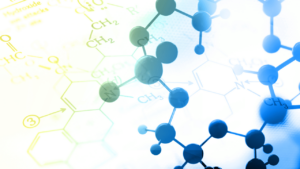ESCA – Electron Spectroscopy for Chemical Analysis

Electron Spectroscopy for Chemical Analysis (ESCA), also known as X-ray Photoelectron Spectroscopy (XPS), is a surface-sensitive analytical technique used to investigate the chemical composition and electronic structure of materials. It is based on the interaction between X-rays and electrons in a sample’s surface, providing valuable information about the elemental composition, chemical bonding, and electronic state of the surface layers. Here is an overview of ESCA, its applications, strengths, and limitations:
Principle of ESCA: ESCA operates on the principle of photoemission. X-rays are used to excite electrons in the sample’s surface, causing them to be ejected from the material. These ejected electrons, known as photoelectrons, carry information about the binding energy and kinetic energy, allowing for the analysis of the sample’s chemical composition and electronic structure.
Applications:
- Chemical Analysis: ESCA is primarily used to determine the elemental composition of the outermost atomic layers of a material. It can identify the presence of elements, their chemical states, and oxidation states.
- Chemical Bonding: ESCA provides insights into chemical bonding, such as the identification of functional groups, coordination states, and the presence of specific chemical species.
- Quantitative Analysis: It is capable of quantifying the elemental composition and concentration of surface elements in the range of a few atomic layers.
- Material Characterization: ESCA is widely applied to study the surface properties of a variety of materials, including polymers, metals, semiconductors, ceramics, and thin films.
- Catalysis: In catalysis research, ESCA helps analyze catalyst surfaces to understand the active sites and reaction mechanisms.
- Surface Modification: It is used to monitor changes in surface chemistry due to processes like oxidation, adsorption, and passivation.
Strengths:
- Surface Sensitivity: ESCA is highly surface-sensitive, providing information about the outermost atomic layers of a material, typically within a depth of a few nanometers.
- High Resolution: It offers excellent energy resolution, allowing for precise determination of binding energies and chemical shifts.
- Non-destructive: ESCA is a non-destructive technique, which means that the sample remains intact during analysis.
- Elemental Specificity: It is element-specific and can distinguish between elements even when they are present in the same compound.
- Quantitative Analysis: ESCA provides quantitative data on the composition and concentration of elements on the surface.
Limitations:
- Surface Sensitivity: While the surface sensitivity is a strength, it can also be a limitation because ESCA cannot provide information about the bulk properties of a material.
- Sample Preparation: Samples must be ultra-high vacuum compatible and often require special preparation, including cleaning and sputtering, which can introduce artifacts.
- Depth Profiling: ESCA is not suitable for depth profiling because it only provides information about the top few nanometers of the sample.
- Limited Depth Information: It provides no information about the chemical composition and electronic structure beyond the surface layers.
- Expensive Equipment: ESCA equipment is relatively expensive and requires a vacuum environment, making it less accessible than some other analytical techniques.
In summary, ESCA is a powerful technique for analyzing the chemical composition and electronic structure of the surface layers of materials. Its surface sensitivity, high resolution, and elemental specificity make it valuable for a wide range of applications in materials science, chemistry, and surface science. However, it is essential to be aware of its limitations, especially its inability to provide information about the bulk properties of materials and the need for specialized sample preparation.

